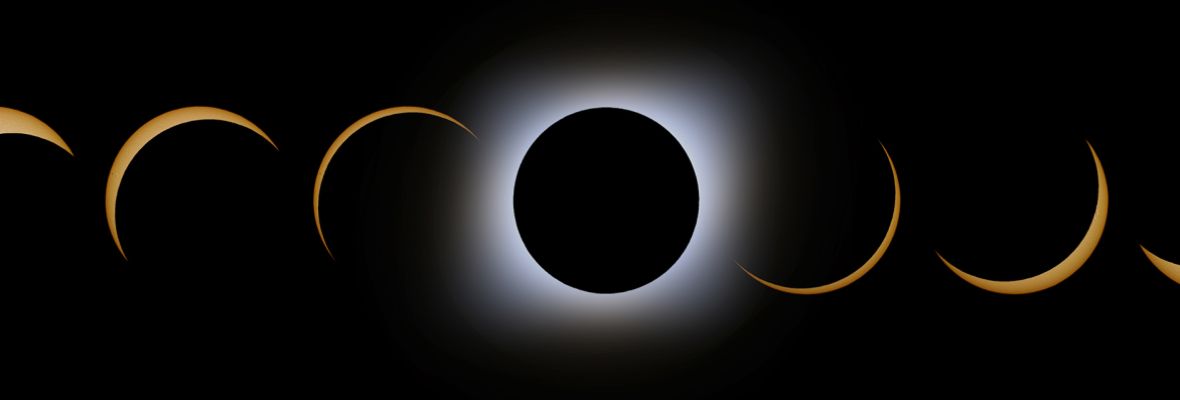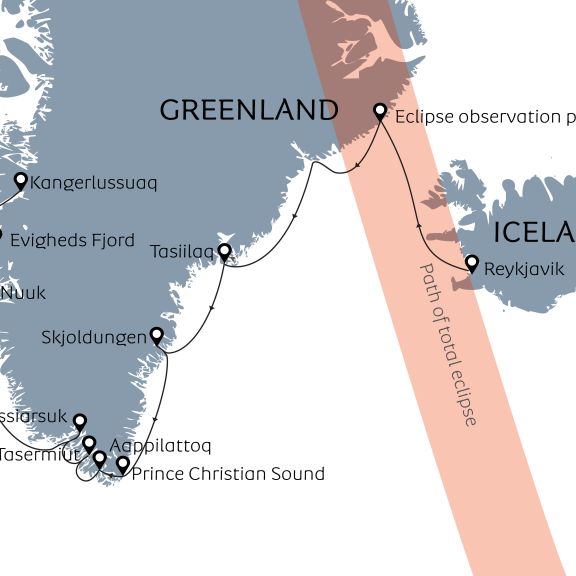Greenland Solar Eclipse 2026
Next DepartureAug. 10, 2026See all departures |
Duration13 daysSee the itinerary |
Activities
, Kayaking, Lectures, Photography, Tundra, Zodiac |
Experience one of nature's most dazzling phenomena in one of the world's most awe-inspiring destinations. Experience totality in wild East Greenland. Experience with us.
On August 12, 2026, a total solar eclipse will pass southwards through mountainous Northeast Greenland. At 16:37 in the afternoon, the shadow of the moon will reach the dramatic and isolated Blosseville Coast in East Greenland. Our vessel Ocean Albatros will be anchored close to shore at the exact centre of the total eclipse. Sheltered from the ocean, our calm landing beach will provide unobstructed view towards the western sky. Totality will last for 2 minutes and 17 seconds.
This unique solar eclipse, far away from any inhabited location, is a fitting start to our grand expedition cruise from East to West Greenland. Departing the hip Icelandic capital of Reykjavík, we will sail directly for the eclipse area to witness this natural wonder, surrounded by staggering natural beauty. Following this spectacle, we will cruise southward along the east coast of Greenland, witnessing glaciers flowing from the snow-capped peaks of the Watkins Mountains, experiencing unique East Greenlandic culture in the town of Tasiilaq, and marvelling at the stunning fjords and glaciers of Skjoldungen. From here we will sail through the magnificent strait of Prins Christiansund, a glacier-lined channel separating Kap Farvel (Greenland's southernmost point) from the mainland. We will next venture deep into the fjords of South Greenland to visit the ancient remains of Erik the Red's farmstead. The lush green pastures and rolling hills of South Greenland make it easy to see why the Norse settlers gave the island the name it bears to this day - and why the Norse chose to settle in this green paradise.
Following the magnificent coastline of Earth's largest island, we will visit Nuuk, one of the smallest world capitals. Nuuk still has a strong Greenlandic vibe; tiny traditional wooden houses sit in the shadow of glassy towers, and locals buy seal and whale meat at the city market. From Nuuk we will chart a course for Evighedsfjord, the“Fjord of Eternity”, where several glaciers flow from jagged peaks down into the plunging depths of the fjord. After twelve days on this exciting and unforgettable eclipse cruise, we disembark in Kangerlussuaq, ready for the flight back home. Our expedition vessel Ocean Albatros is a revolutionary and stylish small ship that combines exquisite comfort with modern technology as well as unique stability in rough seas. First-class dining and expert lectures on astronomy, zoology, geology, and Inuit culture will enhance this unique voyage to witness totality on Earth's largest island.
Facts about Greenland Solar Eclipse 2026
- Arctic
- Greenland
- Iceland
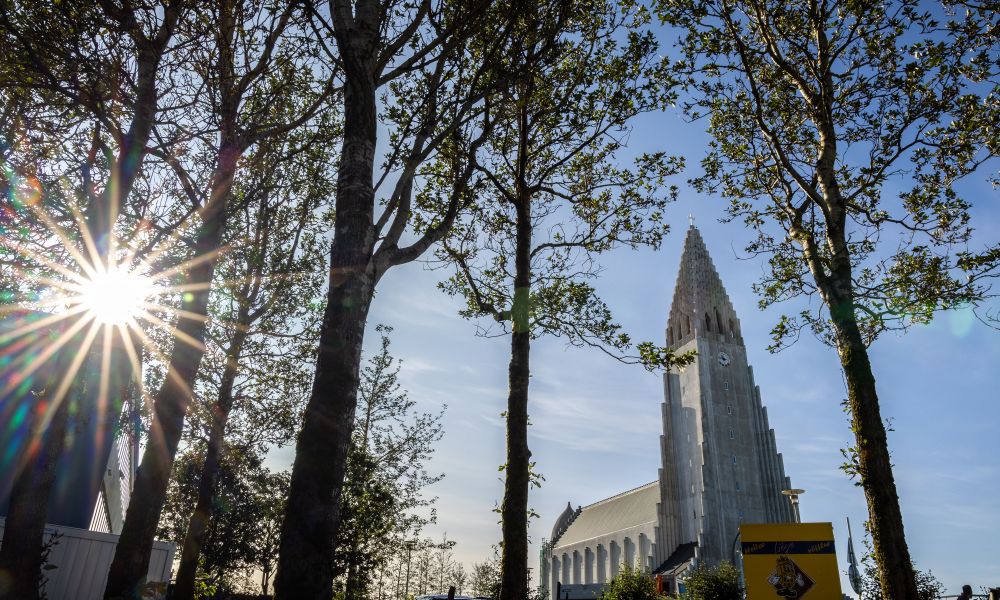
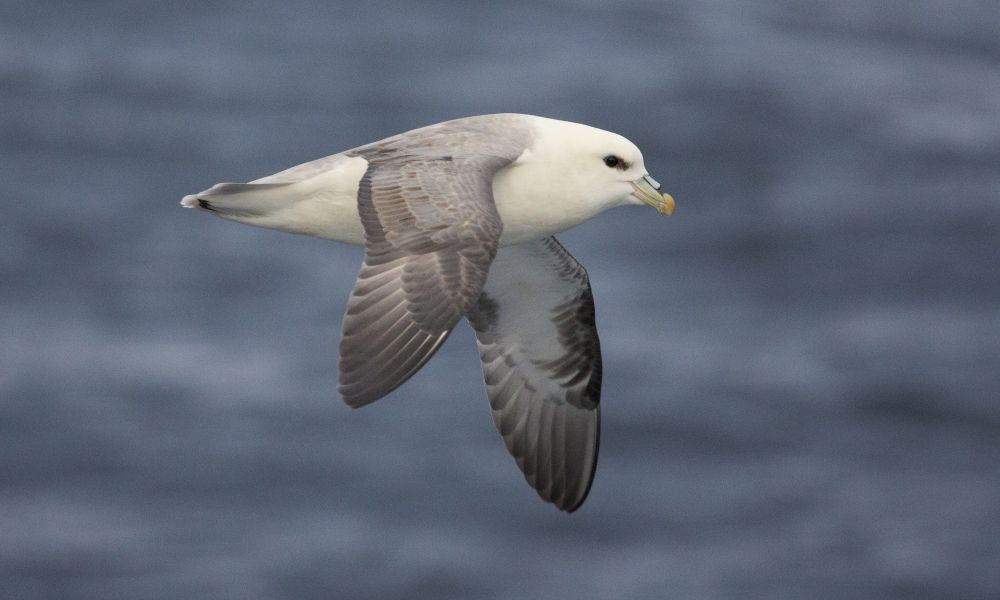


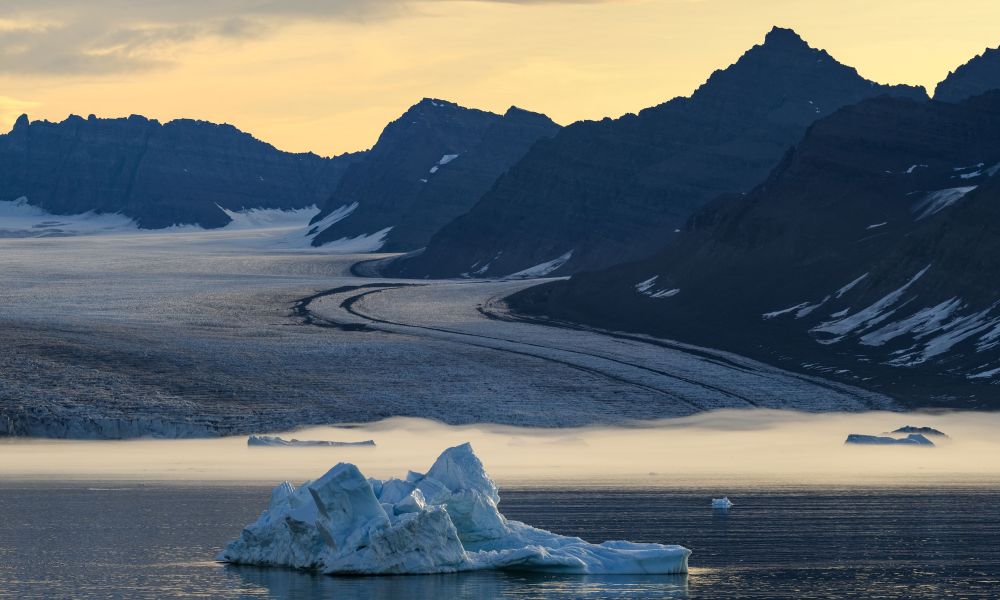
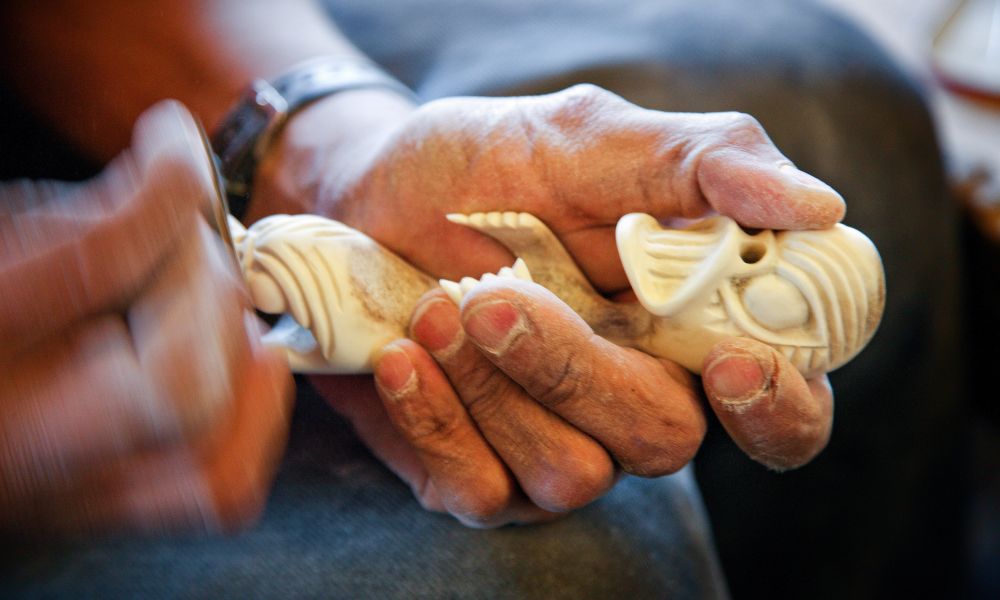
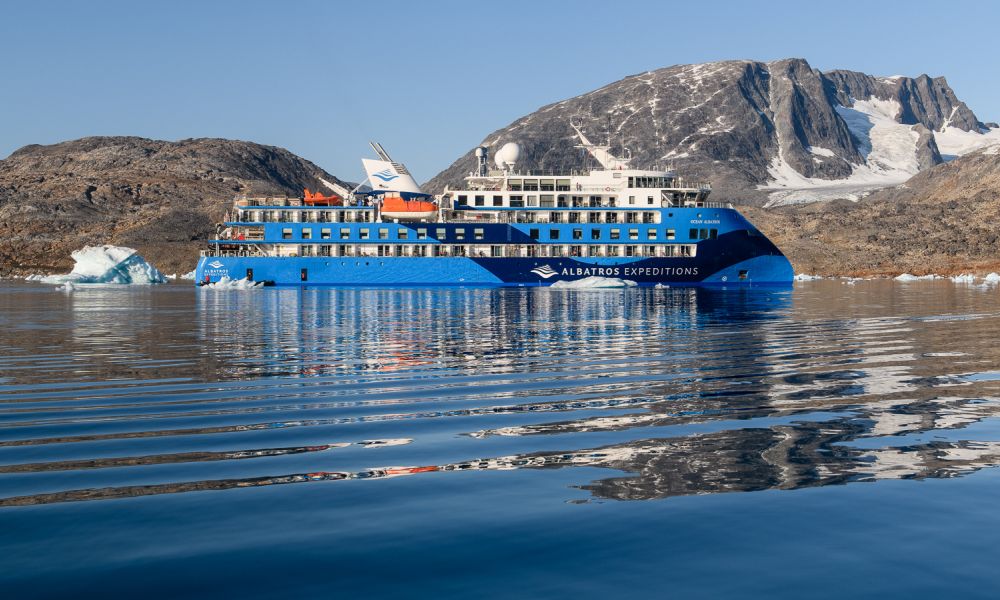




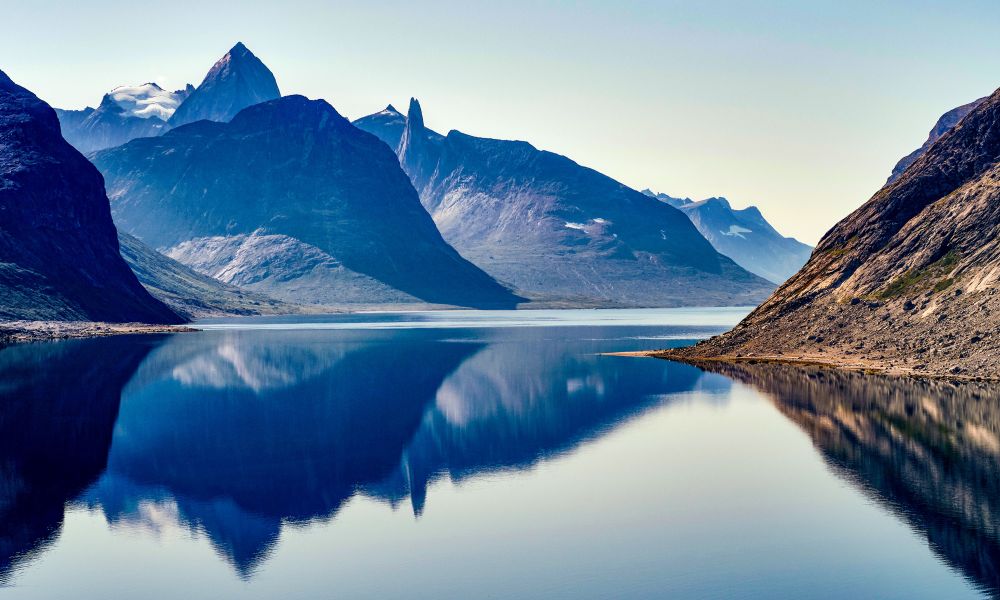
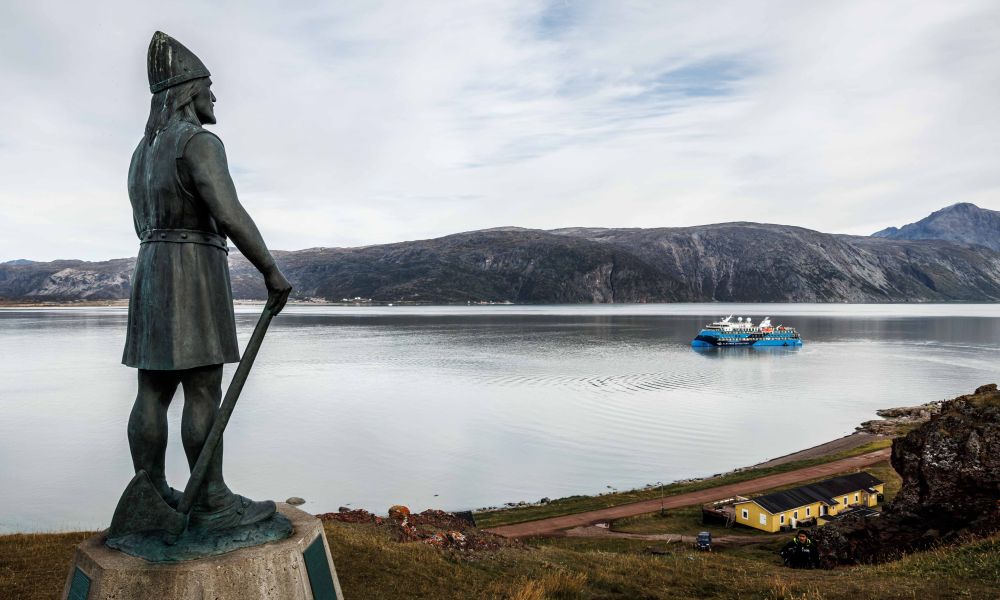
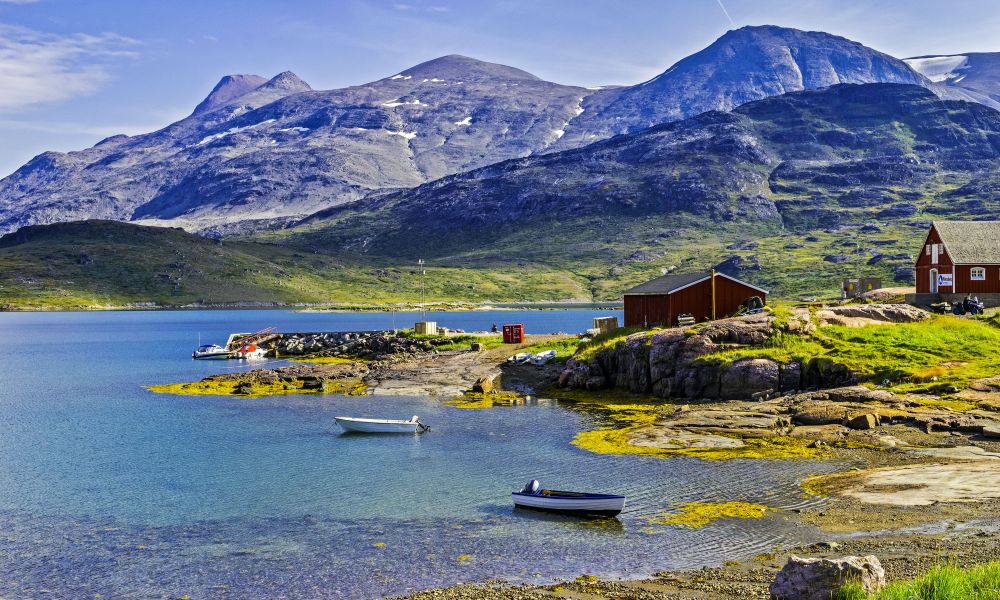
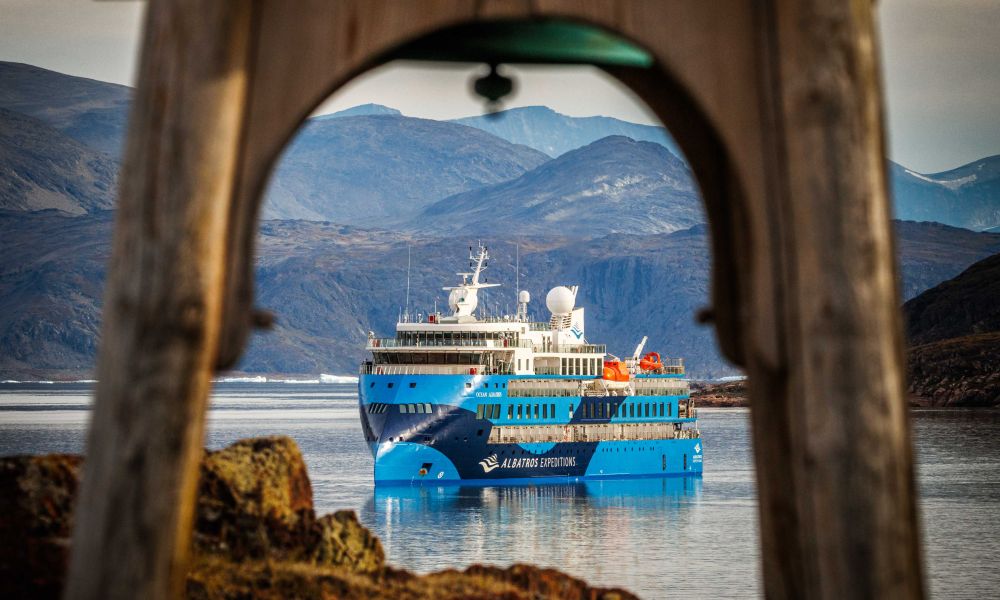



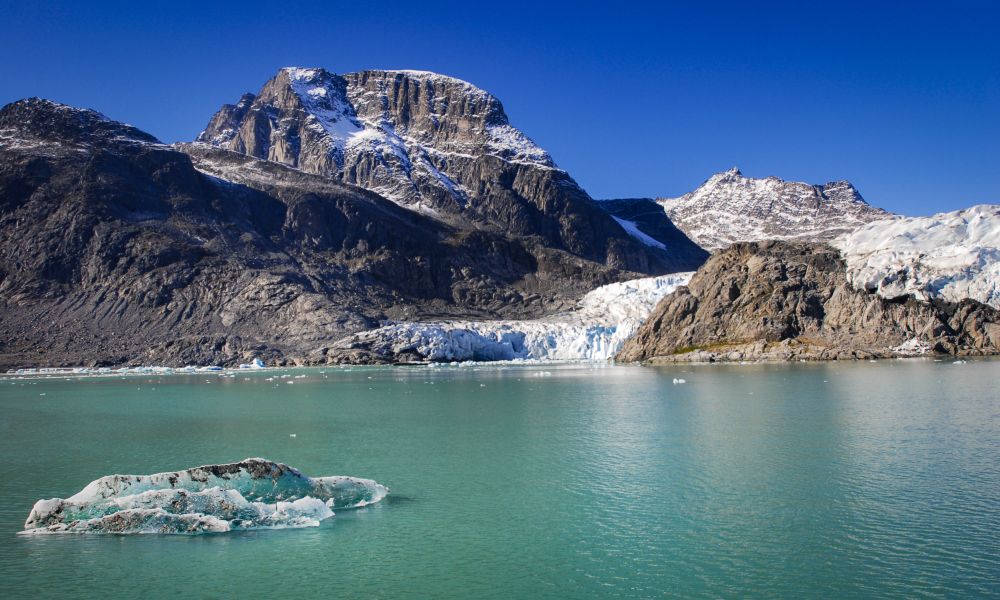

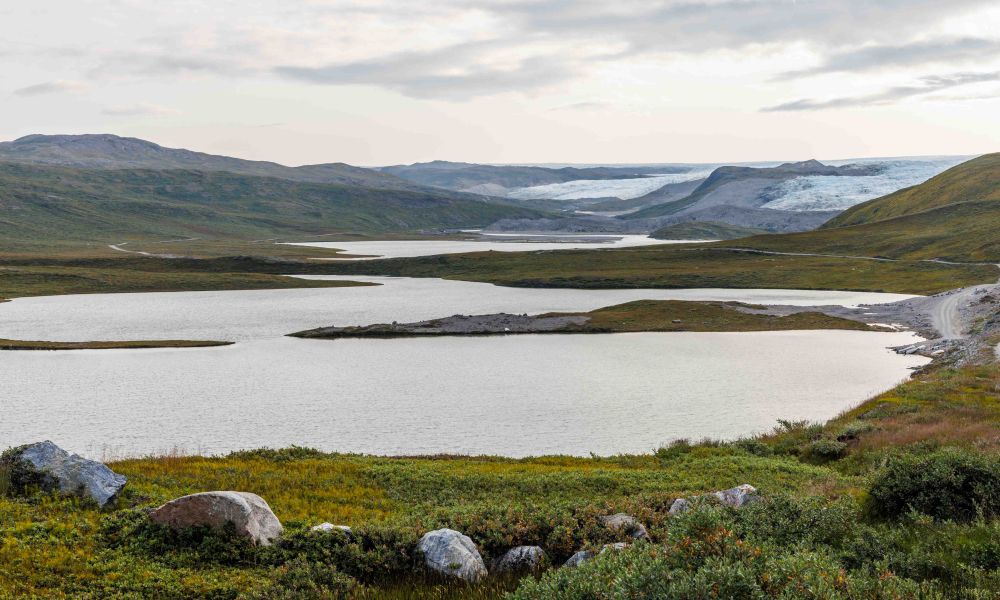
Day 1
Reykjavik, Iceland
The rock-like columns of Hallgrímskirkja Church loom over the city of Reykjavik, a hip Scandinavian capital which needs little introduction. With new Nordic cuisine, excellent shopping, fantastic excursions and an easy relaxed vibe, Reykjavik is one of Scandinavia's most welcoming and exciting cities. Explore the city's world class (and often very quirky) museums, shop for snuggly local sweaters, or simply watch this bustling city in action on a cozy cafe terrace.
MV Ocean Albatros awaits embarkation in the city's bustling harbour, with comfortable staterooms ready to welcome our guests. After our mandatory safety briefings and lifeboat drill, Ocean Albatros will sail out of Reykjavík and chart a course for the wild east coast of Greenland.
Day 2
At sea, crossing the Denmark Strait
The Denmark Strait is the narrow section of the North Atlantic Ocean separating Iceland from Greenland. This body of water is among the most productive in the world, where the cold polar East Greenland Current collides with the warm northbound Gulf Stream. These nutrient-rich waters support vast stocks of fish, and in turn the humans, seals, whales and seabirds which rely on them. As Ocean Albatros sails across the Denmark Strait, our eclipse experts onboard will take careful note of weather and ice conditions at the eclipse location and instruct our guests on procedures to safely view and photograph the eclipse. As we approach Greenland, our onboard team will also provide information on the ecology, geology and wildlife of the area, as well as ensuring our guests are informed on important topics such as Zodiac operations and polar bear safety. In other words, getting prepared for the adventure to come!
Day 3
Eclipse Day, Blosseville Coast, East Greenland
During the early hours of the day, we approach the massive rock walls of the Blosseville Coast. A hundred years ago this coastline was feared by sailors due to the almost permanent sea ice, which even in summer could trap and crush unsuspecting ships. However, warmer temperatures during the last decades and huge advances in marine technology mean this forbidding coast and its sheltered landings in the dramatic fjords can now be accessed by certain ice-strengthened vessels such as ours.
For this important day, Albatros Expeditions have carefully researched the best possible viewing location – a location as close to eclipse centre line as possible, with easy Zodiac access, views unobstructed by mountains to the southwest and likely to have clear skies. Ocean Albatros will drop anchor close to the shore around noon. Our expedition staff will scout the area for wildlife, and after lunch all guests will get ashore by Zodiac in good time to set up their equipment and view this natural wonder.
The shadow of the moon moves toward us from north Greenland at a speed of 4,000 kilometre per hour. The partial eclipse begins at 16:37 local time (the same as UTC and Reykjavík time), and the totality begins at 17:37. The sun at maximum eclipse will be in the southwestern sky, unobstructed by any mountains at the mouth of our little fjord. At 17:40 the first rays slip past the lunar disk to create the legendary “Diamond Ring” – and then the totality is over. The spectacle ends around 18:33 when the last fringe of the moon leaves the solar disk, and the shadow continues south toward the northern coast of Spain. We will pack up our equipment, tripods, and other belongings and return to the ship, where a gala dinner has been prepared for this very special day!
Eclipse photography - a word of advice
Much has been written about how to take good pictures during a solar eclipse. The most important phrase in almost all these descriptions is: DON’T! It is extremely difficult to get good pictures, especially during totality, and it requires very advanced equipment and knowledge. If you do not have this, you risk missing the most important thing, namely experiencing the special and unreal atmosphere that a total solar eclipse gives. Instead, use the short span of the eclipse to observe the effect of the fast-changing light on the landscape. And when turning your eyes towards the sun, always wear the solar eclipse glasses provided to you by Albatros Expeditions.
Day 4
Along the Blosseville Coast
Captain and his officers will steer Ocean Albatros south along Blosseville, the most dramatic coast outside of Antarctica. The tall and dark rock walls have their origin in the opening of the Atlantic Ocean, when Norway and Greenland separated, and thousands of cubic kilometres of lava flowed up through Earth’s crust. The dramatic layers of black rock bear testament to countless volcanic eruptions in the region approximately 50 million years ago. A magnet for geologists from around the world, this fascinating region was first surveyed by legendary Danish explorer Ejnar Mikkelsen.
If ice and weather conditions allow, the Expedition Leader and Captain will try to arrange for a shore landing at the mouth of Kangerlussuaq, a typically descriptive Greenlandic name meaning “Big Fjord”. Despite the forbidding landscape and the brutal weather of the region, ancestors of today’s Inuit have lived in the region for thousands of years. A few abandoned Inuit settlements and expedition huts are scattered in this otherwise untouched and otherworldly landscape.
Day 5
Tasiilaq, East Greenland
Proceeding along the coast, we soon arrive at Tasiilaq, the largest settlement in East Greenland. Unlike the west coast, which has had uninterrupted contact with Europe since the 1700s, the coast of East Greenland remained more or less uncontacted until around 1894, when a Danish trading post was established at Tasiilaq by Gustav Holm’s famous Skin Boat Expedition. The vast distances involved in Arctic travel meant that the people of East Greenland (Tunumiit) were isolated from their cousins to the west, and the language, traditions and culture of East Greenland therefore differ significantly to those in other parts of the country.
Ancient traditions are strong here. This region of Greenland was the home of the last Angakkuit (Shamans) of Greenland, and is the home of the tupilak - a monster fashioned from animal (and sometimes human) body parts and animated by the power of an Angakkuq to wreak havoc on enemies. Creating such a monster was dangerous, as it could be turned back by a more powerful magic user to attack its creator. The first Europeans were curious as to what these dark beasts looked like, and locals carved facsimiles in bone or horn, beginning one of Greenland's finest artistic traditions. The tupilaat made by artisans in Tasiilaq are considered among the best in the country.
Tasiilaq sits in a perfect natural harbour on Ammassalik Island (meaning 'the Place of Many Capelin'). While superficially similar to towns on the West Coast, the landscape here is much more rugged, the people fewer, and the sled dogs much more numerous. Tasiilaq offers excellent opportunities to explore, with excellent hiking routes such as the Flower Valley easily accessible from town. For those wishing to delve into Tunumiit culture, visit the museum, located in the city's old church, hear the city's exquisite choir perform in the modern church, or watch a drum dancer in traditional East Greenlandic costume perform a millennia-old spiritual tradition. For those wishing to indulge in some retail therapy, visit the Stunk Artist's Workshop, where skilled craftsmen create beautiful pieces from natural local materials.
Day 6
Skjoldungen/Saqqisikuik
Today's adventure begins as we sail into magnificent Skjoldungen, a staggeringly beautiful fjord on the southeastern coast of Greenland. The fjord is named for Skjold, an ancient Danish King of Norse legend, while the Greenlandic name, Saqqisikuik, references the sunny climate of the area. Various archaeological finds on the island which sits in the middle of the fjord suggests nomadic Inuit groups visited and stayed in the area in years gone by; more recently, settlers were brought from Tasiilaq to settle the island in the 1930s, but returned there thirty years later; some houses can still be seen on the southern side of the fjord. A small weather station was also operated on the island by the Allies during WWII.
Today uninhabited, Skjoldungen sits almost 300km from the nearest village, with Mother Nature its only ruler. Vast saw-toothed mountains lined with opalescent glaciers line the deep chilly waters of the fjord, which can freeze even in summer. At the head of the fjord lies the magnificent Thryms Glacier, a magnificent river of ice flowing down from the ice sheet. On the southern side of Thryms Glacier lies the sweeping U-shaped glacial valley of Dronning Maries Dal - a textbook example of a glacially-produced landscape. Join your expedition team for a walk on the flower-lined floor of this valley, and marvel at the stunning scenery. Ensure you are on the outer decks on our approach and departure from this magnificent fjord too: you will not be disappointed!
Day 7
Prins Christian Sund and Aappilattoq
South of Skjoldungen lies Cape Farewell, which is renowned not only as Greenland's southernmost point, but also for its infamously challenging weather. With this in mind, we deliberately opt for a far more comfortable but also more spectacular route, cruising across to West Greenland via the inside passage of Prins Christian Sund. Known in Greenlandic by its typically descriptive name of Ikerasassuaq ('the Big Strait'), this 60 km long waterway reaches from the east coast to the settlement of Aappilattoq in West Greenland.
Prins Christian Sund is one of the most spectacular waterways anywhere on Earth. Kept free of ice year round by strong tidal currents, the strait is hemmed in on either side by mountains which rise straight out of the water some reaching over 2,000m in height. Large glaciers flow from the ice sheet into the sea on the northern side of the strait, while sapphire blue mountain glaciers loom over the water from the southern side, and vast icebergs stud the glassy waters.
By mid-afternoon we will visit the small village of Aappilattoq, which sits hunkered beneath the towering mountains at the end of Prins Christians Sund. The village is a world away from busy towns of West Greenland; life here moves at a slower pace, following the rhythms of the wind, waves and tides. Aappilattoq (meaning 'Red' in Greenlandic, referring to the stark granite bluffs above) offers excellent hiking opportunities, and the local choir is renowned throughout Greenland.
Day 8
Tasermiut and Uunartoq
Tasermiut (meaning 'the Settlement by the Lake') is one of Greenland's best kept secrets. Extending northeastwards 75 km from the town of Nanortalik to the Ice Sheet, the fjord is lined by green, fertile side valleys and sheer granite walls reaching 2000 m above sea level. These rock walls are often compared to El Chalten in Argentina, or California's Yosemite, but in reality the sheer scale of these cliffs far exceeds both, and they are a lifetime goal for the world's most expert rock climbers. The Norse settlers called this waterway Ketil’s Fjord and build an Augustinian monastery in what is still called Klosterdalen (“Monastery Valley”). We will make a zodiac landing and a short easy hike to experience the fantastic landscape at the head of fjord - no climbing gear required!
Following the coast north, we reach the small island of Uunartoq, famous for its geothermal springs with year-round temperatures of 34-36 degrees centigrade. While the hot springs of Iceland are more famous, Uunartoq surely beats them all for sheer natural beauty; nowhere else in the world can you relax in perfectly hot water while icebergs float past in the sea nearby. In fact, many visitors use the frigid sea as the ideal cold plunge to enhance this natural spa! The Norse settlers knew this place as well, and remnants of a nunnery have been excavated on the island. We will make a landing on the island by Zodiac in the early evening and take turns to dip into the hot pool.
Day 9
Qassiarsuk and Itilleq Kujalleq
During the early morning we will cruise below the majestic mountains of Tunulliarfik Fjord towards the small village of Qassiarsuk. The fjords here are lined with lush green meadows and dotted with small sheep-farming settlements, of which Qassiarsuk is perhaps the best known.
While the modern village of Qassiarsuk was founded in 1924, the location has a fascinated and much longer history; it was here a thousand years ago that legendary Norse explorer, Eric the Red, settled after being banished from Iceland. Erik and his family set up a small farmstead in typical Norse style, naming new settlement Brattahlíð, “The Steep slope”. Erik himself kept fiercely to the Norse gods, but his wife Thjodhild was a Christian. Legend has it, she refused to join his bed until he built her a church, which he eventually did, constructing a tiny hut (Þjóðhildarkirkja) which was nevertheless the first church in the Americas.
Across the fjord lies Itilleq, a small bay where a trail leads to the village of Igaliku. During the afternoon, we will trek through the lush green hills to see the remains of the Norse Bishop's palace at Garðar - once a place of great power and influence in this remote corner of the Norse world.
Day 10
At sea, en route towards Nuuk
From South Greenland, we will follow the rugged coast of this vast island northwards. All settlements in Greenland (with the exception of Kangerlussuaq) are situated directly on the ocean coast of the country, and the vast majority of residents (some 50,000 or so) live on the narrow strip of coast on the west of the country, facing the Davis Strait.
Ocean currents bring warm water up from the Atlantic to the west coast, enriching these wildlife-filled waters. During our day at sea, keep your eyes on the sea! Whales, seals and a huge variety of seabirds are common in these rich waters.
Day 11
Nuuk, Capital of Greenland
A mixture of skyscrapers and traditional wooden houses, the quaint and the cosmopolitan, Nuuk is a city of contrasts. The vibrant bustling capital of Greenland, Nuuk feels much larger than its 19,000 inhabitants, and offers a wealth of experiences to visitors. The calm fjords around Nuuk have been inhabited by Paleo-Inuit cultures since at least 2200 B.C., and archaeological evidence indicates waves of migration through the area as ancient hunters followed migrating prey. Around the year 1000 A.D., Norse colonist from Iceland established the Western Settlement in the green meadows of Nuuk Fjord; these settlers mysteriously disappeared several hundred years later leaving the island to the Inuit, who were far better equipped to live in Greenland's harsh environment.
Nuuk offers a huge amount to the discerning visitor; larger than any other city in Greenland, Nuuk has a bustling cosmopolitan vibe and hosts some of Greenland's best attractions. Swing by Kolonihavn district to visit the Greenlandic National Museum, a treasure trove of history stretching back to the first inhabitants of this icy island - including artefacts from the Paleo-Inuit and Norse periods, as well as the spellbinding Qilakistoq mummies. Explore Greenlandic culture at Katuaq, the city's cultural centre, and an architectural marvel; shop for authentic Greenlandic artworks in the city's many boutique shops, or simply relax at a hip curbside café with a Greenlandic coffee and watch this vibrant city in action. Nuuk York (as proud locals call it) is unlike any other city in Greenland, or indeed the world.
Day 12
Kangaamiut and Evighedsfjorden
On the last full day of our expedition, we will arrive at the small village of Kangaamiut, an incredibly picturesque settlement in Greenland’s central Qeqqata region. Surrounded by cold rich waters and a vast back country brimming with game, life in Kangaamiut moves at a slower pace, and locals still live a largely traditional lifestyle, surviving by hunting and fishing. Hike to the heliport atop the hill for stunning views over the town and the surrounding fjordlands, or meet the friendly local people during a display of traditional clothing, foods, and seal-flensing. The artists of Kangaamiut are well-known throughout Greenland, and some of the locals' most splendid work can be viewed in the town's small museum.
In the afternoon, we will sail inland into Evighedsfjorden/Kangerlussuatsiaq, one of the many deep fjords carved between the steep mountains of this region. The Danish name 'Evighedsfjorden' means 'The Eternity Fjord', referring to the vast size of the inlet, while the Greenlandic name 'Kangerlussuatsiaq' translates as 'The Rather Large Fjord' - something of an understatement! Evighedsfjorden stretches around 100km into the glacier-clad mountains, bisecting the large ice cap which overlies much of the land between Nuuk and Sisimiut - Greenland's two largest cities. We will aim to explore on a Zodiac cruise in front of the Evigheds Glacier, which flows into the fjord from the Maniitsoq Ice Cap above. Watch for calvings from the glacier, and guillemots and kittiwakes on the nearby bird cliffs.
Day 13
Kangerlussuaq - Disembarkation
During the night, we will sail up the 160-kilometer/100 mile Kangerlussuaq Fjord. After breakfast aboard the ship, we will bid a fond farewell to the ship's crew, Expedition Team, and fellow travellers before shuttling ashore by Zodiac.
Due to Kangerlussuaq’s military history and present-day role as an important air travel hub, the town remains fairly isolated from Greenland’s rich cultural traditions in comparison to other regions. While you still find cultural experiences when visiting Kangerlussuaq, the most impressive attraction is the surrounding nature, which is just beckoning to be explored. Kangerlussuaq itself was largely constructed by the American military in the 1950s, and this small airport town has retained something of its Cold War atmosphere. Your Arctic adventure and time in Greenland concludes as we arrive at the sleek modern airport terminal – all of us with memories to last a lifetime.
Inclusions
New Inclusions: Arctic 2026
- 13-Day/12-night shipboard ensuite accommodation in your selected and paid category and occupancy
- Mandatory one-way transfer package: includes flight Kangerlussuaq to Copenhagen via Keflavik and group transfer from ship to Kangerlussaq airport
- Complimentary use of Expedition Parka* and rubber style muck boots*, on loan for the duration of your expedition
- English-speaking Expedition Team
- Guided walks, nature hikes, Zodiac landings and excursions, as per itinerary, guided by our Expedition Team (excluding optional or activities with cost)
- Briefings and educational lectures by the Expedition Team
- Citizen Science & Future Scientist Residency Program - tbc
- All meals on on the ship (full board): breakfast, lunch, dinner and snacks
- Complimentary house wine, beer and soft drinks at dinner (selected labels and brands)
- 24 hours access to tea, coffee, and ‘Grab and Go’ comfort food
- Welcome and Farewell Cocktail Parties
- Taxes and landing fees
- 500MB Complimentary WiFi for use on your personal device
- Digital Expedition Memento , including a curated selection of photos, videos, expedition log and map, and wildlife list
- Exclusive Suite Inclusions: Available on Ocean Albatros: Junior Suite (Cat A), Balcony Suite (Cat B), Brynhilde Suite & Freydis Suite only, and Ocean Victory: Junior Suite (Cat A), Balcony Suite (Cat B) & Freydis Suite only: Wine and fruit platter on arrival, restocked in-suite mini bar (non-alcoholic) and complimentary laundry service throughout your expedition
Exclusions
- International or internal airfares unless listed in the itinerary
- Excursions and activities not mentioned in the itinerary
- Meals and beverages not listed as included
- Voluntary gratuity for the crew and Expedition Team (we recommend USD 20 per person per day)
- Personal expenses such as spa services, boutique purchases, bar, laundry, communications unless specified
- Mandatory travel insurance (must meet mandatory minimum coverage requirements for medical treatment and evacuation)
- Visa, reciprocity and passport fees
- Medical care or emergency evacuation
- Expedition Jacket and rubber muck-style boots outside of available sizes. Please enquire for more details.
- Life jackets for selected minors. Please enquire for more details.
- Anything not mentioned under ’Inclusions”
After leaving the Icelandic capital of Reykjavik, your expedition vessel will proceed onwards into Greenland to explore the unknown. The goal for the days spent exploring in Greenland is to offer activities which will allow everyone to explore off the ship as much as possible, and experience the nature, settlements and culture of Greenland in person.
Our activities in Greenland will vary widely according to the nature of the locations we visit – some larger settlements need an entire day to explore, whereas some smaller villages can be seen in a few hours. Greenland is Earth’s largest island, and on any itinerary in this region, travel time between destinations can be significant. Activities we offer include landings, Zodiac cruises and ship cruises. Regulations in Greenland limit the number of people ashore at any time at certain natural and historical sites, so we will usually aim to offer a Zodiac cruise while our first group of guests are ashore, and reverse this for the second group ashore to maximise exploration time where numerical limits apply. In towns and cities where the environment is less sensitive, there are no limits on numbers of people ashore. No matter the day’s planned activities, the onboard Expedition Team and Expedition Leader will work as hard as possible in conjunction with the Captain and Crew to maximize exploration opportunities.
A “typical” expedition day in Greenland may look like this (subject to weather and sea conditions and sailing schedule):
- 0645: Wake-up call
- 07.00-08.00: Breakfast
- 08.30-11.30: Morning activity – arrival in port at anchor, Zodiac ashore to explore Greenlandic settlements, historical sites etc. Depending on the location, we may spend the whole day in port.
- 12.30-13.30: Lunch onboard
- 1430-17.30: Afternoon Activity – Either in connection with the morning, or at a different site, depending on itinerary
- 18.30-1930: Evening Recap with Expedition Team
- 19.30: Dinner
Landings are a great opportunity to stretch your legs and set foot on shore to visit the wilderness, towns and cities of Greenland and experience Arctic nature first-hand. Our experienced Expedition Team will be on shore to help you spot any wildlife, identify the different species of birds and mammals, guide you through Greenlandic settlements, as well as keep our guests safe on shore from any potential hazards.
We remind our guests that Greenland is a truly wild destination, to consider their physical capability when travelling in the country. In smaller towns and villages, infrastructure for tourism may be less well developed than in other destinations. Most smaller towns and villages lack step-free access, and roads and paths can often be steep and uneven.
Remember that East Greenland holds a significant population of polar bears; while encounters are rare, these large wild animals can be dangerous. For that reason, when ashore in remote regions of Greenland our specially trained staff always prioritise the safety of our guests, and freedom to roam and hike in the area may be limited. We remind all visitors that this is for their own safety, and the safety of these precious animals.
Some sites do not offer landing opportunities, but are locations where exploring on the water offers the best opportunities for sightseeing, wildlife and photography. These Zodiac cruise sites are often known for their concentration of ice, wildlife and even historical landmarks such as Inuit or Norse ruins, where our fleet of Zodiacs offer the best vantage point. This would be the only scenario you may have to wait on the ship (other than in adverse weather conditions), but we will always aim to offer an onboard program during this time, such as seminars given by our knowledgeable and experienced Lecturer team. Zodiac cruises are great for observing icebergs, glaciers, whales, and other marine wildlife. Your skilled driver will navigate around the area looking for wildlife and beautiful landscapes. By the end of the voyage, Zodiac cruises tend to become a firm favourite among our guests because of the vast diversity of scenery and marine life it is possible to experience.
In the event we encounter bad weather or are in a particularly spectacular location, often our purpose-built expedition vessels are the best viewing platform. The Captain and Expedition Leader will search for locations best accessed with the vessel to seek out the best wildlife and scenery. We encourage everyone to bundle up and either head onto the outer decks with the Expedition Team or relax in superlative comfort in our specially-designed lounges to experience the majesty of the Arctic from the best vantage point. During this time, our Expedition Team specialists will offer skillfully-crafted lectures related to the wildlife, history, culture and conservation of the region, and more!
Other activities onboard include our ship Gym, where you can burn some calories on our fitness bicycles or treadmills; most of our ships even have other cardio machines and strength/lifting options. Most voyages throughout the season also offer kayaking (booked and paid onboard – weather permitting), and we will often aim to offer hiking excursions onshore when possible. Our new purpose-built ships have a Spa, in which guests can enjoy massages, facials, and other relaxing treatments (additional cost applies). Our Library is a great place to rest between outings, with expansive views and a wide selection of Arctic-related reading material. During your voyage you will also be able to enjoy our tea time in the late afternoon, or indulge in some retail therapy in our onboard shop, which sells personal necessities as well as specially-selected Arctic souvenirs.
In between our landings and activities we offer three hearty daily main meals. Albatros Expeditions always have allergy flexible options, healthy selections as well as a variety of vegetarian and vegan options.
Our hardworking galley crew deliver multiple Breakfast options, served in a buffet style along with a cooking station where eggs are made to order. At Lunch we are also met with a smorgasbord of mouthwatering choices. Safe to say you will have the energy for your next outing!
When it is Dinner time, you can choose to eat at the main restaurant or book a table at the Specialty Restaurant. Your evening meal is served a la carte, with fresh new options daily and always a selection of fixed items. There is always a vegetarian and pescetarian option available. Albatros Expeditions are known for our delicious menus and a variety of exquisite wine pairings.
Onboard you will also have the option to join Afternoon Tea with sweets, cakes or snacks served each afternoon. Albatros Expeditions have tea and coffee freely available all day throughout the vessel, while specialty coffee, alcoholic beverages and hand-crafted cocktails are available at the ship’s bars.
Spring comes late to Greenland, due to its challenging polar climate. During June, migratory wildlife begins to return to Greenland. Geese, wading birds, and seabirds arrive for their breeding season, constructing nests and defending their tiny but all-important territories. While Greenland experiences the midnight sun from May to August, during June, many of the fjords are still frozen, and snow reaches down to the sea. This cold and unpredictable weather can hamper exploration at times.
By July, Greenland begins to come to life. The tundra begins to come to life, as saxifrages, Arctic willows and heathers start to green the otherwise stark Arctic landscape. Flowers bloom in the brief Arctic summer, rotating through the day to follow the precious sunlight. In wilderness areas, muskox and reindeer can be seen grazing on the fresh greenery, while inhabited locations burst to life. Locals in Greenland take advantage of the brief summer to harvest the ocean’s riches, and summer is prime fishing season. Conditions during July tend to be settled, with calm sunny days the norm (although beware of the mosquitos in windless areas)! Expect to meet plenty of locals – July is the middle of the summer holiday, so expect to see Greenlandic children enjoying their freedom on their bikes and skateboards. Many locals pivot to working in tourism during the brief summer season; even small towns can be bustling when a vessel visits!
August is the peak of the Arctic summer, with long sunny days – although the evenings start to draw in, with several hours of darkness by the end of the month. August is prime hunting season in Greenland – depending on the day, some settlements can be almost empty, with almost all locals heading into the wilderness to hunt reindeer, seals and muskox. Expect to see the fruits of these hunts for sale in local markets, usually proudly sold by local hunters. August is also peak trout season, so expect to see fish hung up to dry around towns and villages, or being smoked in small turf ovens. Most chicks have begun to fledge by this point, and are starting to leave the nest; for cliff-nesting species, this involves a terrifying leap off their nest into the sea – often known as ‘jumping season’. On land, the tundra plants are moving rapidly through their life cycle, and tart crowberries and delicious blueberries are almost everywhere – expect to see locals young and old alike gathering this delectable bounty; some is eaten as-is or used in baking, and the rest frozen to enjoy during the long winter.
The tundra is at its brightest during September, as the willows, then the saxifrages and heathers begin to show their autumn colours; an autumn forest in miniature! During September, the weather in the North Atlantic can become more challenging and wild, giving an even more rugged cast to this spectacular island. September marks the return of true dark nights to Greenland as autumn sets in. Frosts and even snow showers can occur this time of year, although the longer nights also offer a tantalising chance to see the Northern Lights. This time of year, most migratory birds are starting to head south or out to the open ocean for the winter, so expect to see a variety of birds of all ages heading to sea for winter.
Greenland is a vast island, stretching almost 3000km from north to south. The climate throughout Greenland is subsequently hugely varied, reflecting the variation in latitude.
South Greenland has a very mild climate, similar to Scotland or Scandinavia. Temperatures here range between 10-15°C (50-59°F), or potentially even higher in sunny sheltered areas. Extending into the North Atlantic, the weather in South Greenland tends to be wetter and more changeable than the rest of Greenland. While rarely cold, rain and drizzle are common in this maritime area.
Greenland’s west coast tends to have a cooler but more stable climate than the south of the country. Expect temperatures between 8-12°C (46-54°F); as in South Greenland, these temperatures can be exceeded in sheltered areas, especially far up fjords – Kangerlussuaq, situated 160km inland for instance regularly records summer temperatures in excess of 20°C/68°F. The weather is generally calm and sunny, although cool rainy or foggy days do occur. It is very rare for snowfall or sub-zero temperatures to occur in summer, although this does occasionally happen.
North Greenland is correspondingly colder than the southern parts of the country. In the Upernavik and Thule areas, long calm sunny days are the norm in summer, but expect cooler temperatures in around 6-10°C (43-50°F). While generally settled, cool misty and foggy days, frosts and light snow can occur any time.
East Greenland differs significantly from the rest of the country; here, a current of cold water flows down from the Arctic Ocean, moderating the temperature. Temperatures in East Greenland are therefore cooler than at the same latitude on the west coast, with temperatures in Ittoqqortoormiit averaging 5-9°C (41-48°F). East Greenland receives significantly more snow in the winter than the west – street lights in Ittoqqortoormiit are built a metre higher than in the rest of the country to account for this. During late spring, East Greenland also regularly receives rafts of sea ice from the Arctic Ocean, which can linger for several months, cooling the area.
We therefore remind our guests to be prepared for all weather conditions! We highly recommend to our guests to dress in layers (ideally in woolen or synthetic fibers) and a backpack so that layers can be adjusted as the weather dictates. Warm/waterproof layers, hats, waterproof gloves and scarves are recommended for all excursions off the vessel, even on the sunniest days – the weather can deteriorate rapidly at any time. Sun protection (hats, sunglasses, sunscreen and lip balm) is also essential – the low angle of the Arctic sun combined with cool ambient temperatures can cause sunburn to easily go unnoticed until it is too late!
Despite it's high latitude and cold weather, mosquitos and other insects can cause a real nuisance in Greenland during summer. Head nets, long sleeved clothing and repellant are essential for a comfortable experience in Greenland, and we highly advise guests joining this voyage to ensure they prepare for encounters with these tiny irritating Arctic animals!
Albatros Expedition strives to employ the very best Expedition Team in the whole industry. We travel in some of the planet’s most remote regions, where planning and on-location experience is key. Our routes and itineraries are subject to the prevailing sea, ice and wind conditions, which are closely monitored by the Bridge Team and Expedition Leader. Drawing on their vast experience, they find the best alternatives in the rare instances where our planned itinerary needs to be changed. Each cruise is a completely unique combination of locations, where the highlights can often be the totally unexpected. Most of our cruises provide the opportunity to spot a variety of unique wildlife, although this is subject to the whims of Mother Nature and can of course not be guaranteed. As you will no doubt experience, the joy from our Expedition Team when spotting different species on land or at sea is as genuine as your own.
This means that you as our guest are part of an adventure, a true expedition, where plans change, wildlife is encountered on their terms and your team consists of the very best experts within their fields. We strive to maintain a mix of specialists within relevant polar subjects including marine biology, ornithology, earth science, history and others. Albatros Expeditions boast a large number of Expedition Staff onboard, allowing us to maintain a high ratio of staff-to-guests at 1:8, amongst the highest ratios in expedition cruising. Some of our staff have decades of experience on ships or research stations, whilst others may be performing their first season. One thing they all have in common is the wish to make each and every journey a special and memorable experience for our guests. Knowledge, skill, and passion are the trademarks of all Albatros Expedition Staff.
To ensure the safety and quality of experience of our guests, please keep in mind that the itinerary and outdoor activities during each voyage are solely dependent on weather and sea conditions. Your safety is our highest priority. The route and shore landings will be determined by the Captain and Expedition Leader and communicated to guests through regularly scheduled briefings. Albatros Expeditions reserves the right to modify the landings and locations visited during a voyage based on local weather conditions and climate to ensure a safe and enjoyable experience for all our guests. Our voyages are expeditionary in nature, and thus changes to timings are commonplace due to the environment we operate in, as well as wildlife opportunities and locations.



